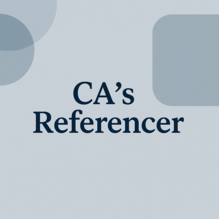PF, gratuity and take-home changing under new labour codes? What to expect
New Delhi, Nov 24, 2025
'It could reduce take-home salary, depending on how employers restructure pay,' says expert. Here's what the 50% wage formula really means for your PF and gratuity
After the new labour codes, some companies have begun changing the salary structure of their employees, adjusting the statutory benefits accordingly. With the Code on Wages, the Code on Social Security and related provisions now notified, employees may see changes in their provident fund (PF), gratuity and in some cases, their monthly in-hand salary. Here’s a clear explainer for salaried readers.
Wider definition of wages
A central feature of the new framework is the standardised definition of “wages”, which includes:
Basic pay
Dearness allowance
Retaining allowance
Allowances that are excluded, such as HRA, conveyance, employer PF contribution or commissions, cannot together exceed 50 per cent of total remuneration. If they do, the excess must be added back into wages for statutory benefit calculations.
Alay Razvi, managing partner at Accord Juris, explains, “This means the base figure used for calculating deductions like PF and gratuity will increase for both permanent and fixed-term employees. The law doesn’t force employers to raise the basic salary itself, but statutory calculations must use the new wage base.”
Impact on PF and gratuity
Provident fund
The PF contribution rate remains 12 per cent, and the Rs 15,000 monthly wage ceiling continues for mandatory PF. Employees whose basic-plus-DA is already above Rs 15,000 will see no change.
However, those below the cap may see their PF base inch up if more of their pay now falls under “wages”.
Gratuity
Gratuity will rise more visibly because it is calculated on the revised, broader wage definition. For many employees, the effective base for gratuity is likely to increase to around half of CTC, leading to higher exit payouts.
The primary difference between a fixed-term employee and a permanent employee lies in the duration and stability of the employment relationship. A fixed-term employee is hired for a specific, predetermined period or project, while a permanent employee has an ongoing, indefinite employment contract
Rohit Jain, managing partner at Singhania & Co, says, “The reports that every employee will now get gratuity after one year are incorrect. It is still five years for permanent employees. Only fixed-term employees benefit from the new one-year rule.”
Will your take-home salary fall?
A lower in-hand salary is possible, but not automatic.
According to Razvi, “A higher wage base means higher statutory contributions. If the employer passes the entire burden to the employee without increasing gross pay, take-home salary will reduce. But companies may also restructure allowances to soften the impact.”
Employers are not required to recover any “shortfall” in PF or gratuity contributions from past years, and retrospective deductions are considered unlikely.
Do employers have to restructure salaries now?
Companies will need to ensure their pay structures comply with the 50 per cent wage rule. Some may add small allowances (such as HRA or conveyance) to maintain flexibility. Others may leave existing structures unchanged and make adjustments only for new hires.
What you need to know
PF for most employees remains unchanged because of the existing ~15,000 cap.
Gratuity payouts will rise, particularly for those exiting after November 21, 2025.
Fixed-term employees become eligible for gratuity after one year.
Take-home pay may dip for some employees depending on how employers restructure CTC.
The new labour codes aim to bring uniformity and expand social security, strengthening retirement savings, even if it tightens monthly budgets for a section of workers.
[The Business Standard]


